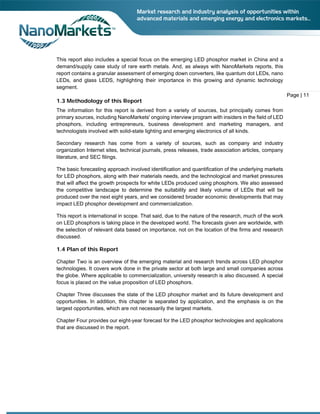This NanoMarkets report provides a thorough analysis of opportunities in the LED phosphor market, building on their 2012 report. It focuses on newer phosphor chemistries like nanophosphors, glass phosphors, and quantum dots. The report identifies how performance improvements can grow markets for phosphors in general illumination, outdoor lighting, and backlighting. It also provides eight-year forecasts of LED phosphor shipments by type, application, and location. The report is required reading for strategy planners in phosphor, lighting, and display industries.











